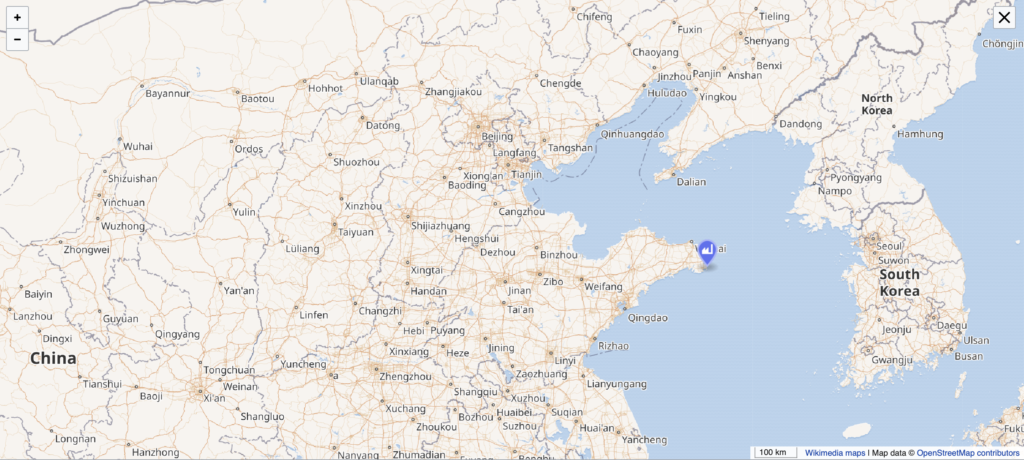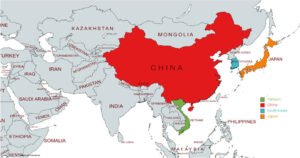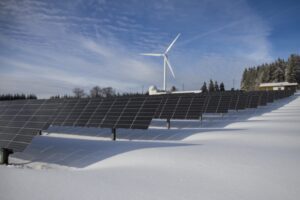- China has commissioned its first fourth-generation nuclear reactor, redefining innovation and safety in the nuclear industry;
- The Shidaowan reactor improves energy efficiency and reduces waste, with a modular design for use in remote locations;
- While China is moving ahead quickly, other countries such as the US and Europe are facing delays in building new reactors.
In a technology race where energy security and slowing climate change are the big prizes, China has just taken a decisive step toward taking the lead.
With the start of commercial operations of Shidaowan – the world’s first fourth-generation nuclear reactor – Beijing is not only defying global expectations, but also redefining the parameters of innovation and safety in the nuclear industry.
This achievement is both an engineering triumph and a strategic move that could shift the balance of power in the global energy sector. But how did China achieve this feat, and what does it mean for the rest of the world?

The Chinese Technological Revolution: What is a 4th Generation Reactor?
To understand China’s feat, it is essential to first understand what sets a fourth-generation nuclear reactor apart from its predecessors.
While previous-generation reactors have made gradual improvements in safety and efficiency, fourth-generation reactors promise to completely change the way they are designed and operated.
They are designed to be “intrinsically safe,” meaning that even in extreme situations, such as a complete loss of cooling power, they will prevent core meltdown (which causes explosions) without the need for human intervention or safety systems.
The Shidaowan High-Temperature Gas-Cooled Reactor (HTGCR) is a perfect example of this innovation.
Using helium as a coolant instead of water, the HTGCR (High-Temperature Gas-Cooled Reactor) operates at much higher temperatures. This increases its efficiency in generating electricity because the higher temperatures allow it to convert more heat into electrical energy.
Furthermore, these high temperatures allow for a more complete combustion of nuclear fuel, making better use of the material and producing less waste.
Furthermore, the modular design – that is, divided into smaller, independent parts – makes it easier to build and deploy in remote locations, opening up new possibilities for the use of nuclear energy in heavy industries and areas with limited infrastructure.
For example, they can be used in mining industries in isolated areas, provide electricity to remote communities, power offshore drilling platforms, and support research centers in hard-to-reach locations.
This modular approach expands the possibilities for using nuclear energy in regions where the construction of large plants would be impractical.
China Leads the Way: Why This Milestone Matters
The inauguration of Shidaowan puts China in a unique position in nuclear technology.
While other countries are still in the planning or construction phase of their fourth-generation reactors, China is already operating commercially, marking a transition from experimental to practical.
This gives China a significant competitive advantage, both in technological and economic terms. This progress reflects a well-coordinated, long-term strategy on the part of the Chinese government.
Since the early 2000s, China has invested heavily in nuclear research and development, recognizing the potential of this technology to diversify its energy sources and reduce its dependence on fossil fuels.
The partnership between state-owned entities such as China’s Huaneng Group, Tsinghua University, and the China National Nuclear Corporation demonstrates a collaborative approach that combines academic expertise, state resources, and China’s industrial capacity.
Where Do Other Countries Stand Compared to China?
While China is making rapid progress, the rest of the world seems to be stumbling.
In the United States, construction of new nuclear reactors has been slow and marked by delays and regulatory issues. Since 1978, only two reactors have begun construction, and neither of them are fourth-generation.
Bill Gates and TerraPower are working to schedule the construction of the country’s first fourth-generation nuclear reactor, Natrium, in Kemmerer, Wyoming, with construction expected to begin in 2026 if all approvals are successful.
The TerraPower-led sodium reactor project, Natrium, is still in the non-nuclear construction and permitting phase.
Europe faces similar challenges. While the European Union has expressed interest in developing small modular reactors (SMRs) and fourth-generation technologies, progress has been uneven.
Partnerships such as the one between Newcleo of the United Kingdom and NAAREA of France, which are developing new types of nuclear reactors—with prototypes scheduled for 2026 and 2030—show promise, but they are still several years behind China in putting these technologies into practice.
Nuclear Power’s Strategic Role in Geopolitics
Nuclear power is more than just a matter of technology or economics; it’s a matter of geopolitics. A country’s ability to generate clean, safe energy gives it greater leverage on the global stage, especially with growing global concerns about climate change and energy security.
In addition to the advantages already mentioned, China’s new technology could also translate into a diplomatic advantage.
Developing countries seeking to diversify their energy sources and reduce their carbon emissions may seek help from Beijing as a preferred partner, especially if Chinese technology proves to be more affordable and effective than Western alternatives.
This scenario could result in a major increase in China’s influence in strategic regions such as Africa, Latin America and Southeast Asia.
Another strategic factor is the potential impact of nuclear energy on the electric car market, where China leads globally. The country already holds the fastest-growing market in this sector, which reduces its domestic demand for oil.
If the electrification of the Chinese fleet is driven by energy generated in nuclear plants, this could accelerate the reduction of dependence on imported oil. As a consequence, the global oil market will be pressured, directly impacting prices and weakening OPEC’s influence.
This contrast is even more pronounced in light of US energy policy, which, in a possible return of Trump to the presidency, could once again prioritize the expansion of oil production. In this scenario, China, with its commitment to nuclear energy and renewables, would position itself as not only an economic power, but also an environmental and geopolitical power.
Can China Maintain Leadership Despite Challenges?
Although China has made impressive progress, maintaining leadership in fourth-generation nuclear technology will not be easy. There are a number of technical, economic and political challenges that the country will need to address.
From a technical perspective, the safe and efficient operation of new large-scale reactors still needs to be demonstrated over time. Any accident or failure could damage China’s reputation and dramatically slow progress.
Economically, developing new reactors requires significant investment. Although Beijing has demonstrated a strong ability to mobilize state resources for infrastructure projects, the opportunity cost of such investments is high.
In addition, the country needs to balance its nuclear ambitions with other energy priorities, such as expanding renewable energy and improving energy efficiency.
Politically, China faces criticism and skepticism from many parts of the world, especially regarding the transparency and safety of its nuclear operations.
To mitigate these challenges, China will need to demonstrate a continued commitment to international safety standards and work more closely with other nations and international bodies.
Is the Future of Nuclear Power Chinese?
China’s success or failure in this will have profound implications for the balance of geopolitical power in the 21st century.
If China continues to advance at this pace, we may be witnessing not just an energy revolution, but a geopolitical transformation of historic proportions.
China’s advance in the nuclear sector represents a break with traditional Western technological hegemony, signaling a new era.
By offering advanced technologies at competitive prices – especially to developing countries – it could displace the traditional influences of the United States and Europe in these regions, giving China a strategic advantage in trade negotiations and diplomatic agreements.
Furthermore, Chinese dominance in the nuclear sector could redefine global norms and standards for nuclear safety and non-proliferation, with the potential for a shift in regulatory parameters that benefit its national interests.
How Beijing chooses to share its technology and adhere to international control regimes will also be crucial to global stability and the prevention of a nuclear arms race.
This geopolitical shift will not only be about who controls the technology, but also about who controls the flow of information and innovation.
By leading nuclear innovation, China could create new technological dependencies, where developing countries that adopt Chinese nuclear technologies become more aligned with Beijing’s interests.
This could give China not only economic clout, but also cultural and political influence, extending its “soft power” in ways that the world is only just beginning to understand.
Whether the world will embrace this shift remains to be seen, but one thing is clear: the global nuclear energy landscape will never be the same again.








Be First to Comment